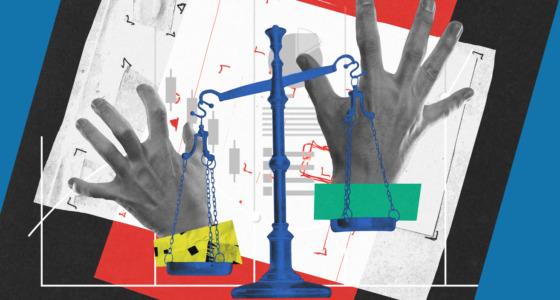

Some say self-assessment accuracy is low. But researchers disagree. In an educational setting, students’ self-assessments are relatively consistent with those of external evaluators, including professors, researchers, and even expert medical assessors. So, if you think you could’ve made a better trading decision, you’re probably right.
Another interesting fact from the study: it’s scientifically proven that feedback like “I did not make a good trading decision” is more effective than “I am bad at trading.” So, keep that in mind.
When you’re day trading, it can be easier to finish one session and move on to the next without looking back. But that approach won’t push you further—it will simply cause you to make the same mistakes over and over. Try this five-step approach instead!
Step 1. Record everything of value
Sometimes, trading apps do all the work for you and record key trade data. Other times, you have to pull this information manually from your trading account.
In either case, make sure to write down the following:
- The traded instrument and market (e.g., Forex – EUR/GBP, Commodities – Silver, Stock Indices – Dow Jones Industrial Average)
- Position size
- The date and time when the trade has been opened and closed
- Entry and exit prices
- Stop loss and take profit levels
- Trade direction
- Profit or loss in USD terms (or your chosen base currency)
Try to also record additional information that you will find useful in evaluating your trading performance, such as:
- Market commentary
- Your reasoning for entering and exiting the trade
- A screenshot of the chart
Step 2. Structure your trade data and history
Some people like to keep it old-school and use a paper-based trading journal. However, it severely limits the way you can keep notes. You can’t attach images, search by keywords, or have a well-organized system. So, an electronic journaling method is the way to go.
If you want to make it as easy as possible, you can use a note-taking app on your phone. Those who want to be more precise and detailed can use a cloud-based document service or spreadsheet software. The latter should be the most helpful method.
Step 3. See what works and what doesn’t
You should commit to sitting down and going back through all your trades, both successful and losing. Of course, it’s much more enjoyable to look back on your success and hope that you can replicate it many times over. But if you don’t study your mistakes, you might not be able to repeat your successful trades.

Step 4. Conduct routine review sessions
Review sessions are not exclusive for the times when things are going the wrong way. They need to be a part of your trading journey at all times, empowering you to make deliberate actions and choices.
At first, there might be nothing particularly interesting standing out in your notes. To train your eyes to know what to look for, you can:
- Ask a more experienced trader (a kind of a mentor) or a trading analyst to review your journal for you.
- Post your results on a trading forum to get many opinions. Although, you should be open to criticism, which is often expressed harshly online.
- Put together a peer group of traders to share your results and review together.
Step 5. Look at the big picture (the weekend, end of the month, and end of the year review)
It’s too easy to get caught up in a one-day journal entry, focusing on what has just happened. However, a bad day doesn’t equal a bad trading career. There are plenty more trading days ahead.
If you notice undesirable patterns in your long-term results, that is when you need to make big changes to your strategy.
Questions to ask yourself
Asking yourself the right questions can help you filter out the actions that have adversely affected your trading results. When reviewing your journal, go through the following checklist:
- Are you closing trades too early, too late, or just on time? Do your stop loss and take profit levels prevent you from getting returns?
- Which technical indicators have been the most helpful? Which ones haven’t been?
- What kind of trading plan did you follow?
- Did you make any adjustments to your trade set-up? Did it work out?
- What is your success/loss ratio? How does it compare to the number of closed trades?
- Which events have affected your open trades?
- Which trading sessions have been the most successful?
- Which days of the week have been the least successful?
And finally, remember the simple truth: determine what works and keep doing it; determine what doesn’t work and stop doing it.









